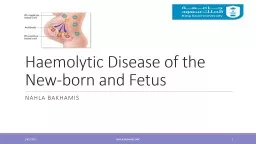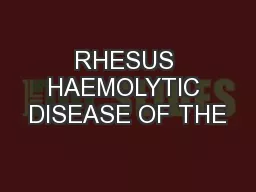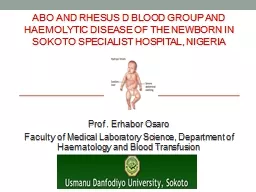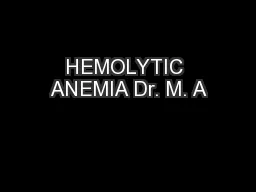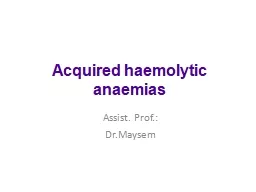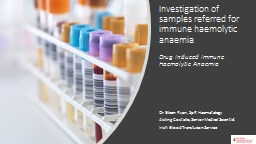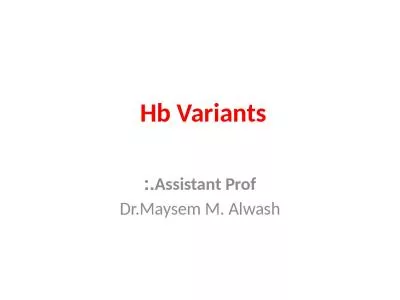PPT-Haemolytic Disease of the New-born and
Author : briana-ranney | Published Date : 2016-05-01
F etus NAHLA BAKHAMIS 10152015 NAHLA BAKHAMIS MSc 1 Haemolytic Disease RBC destruction in vivo may associated with anaemia Intracellularextracellular haemolysis
Presentation Embed Code
Download Presentation
Download Presentation The PPT/PDF document "Haemolytic Disease of the New-born and" is the property of its rightful owner. Permission is granted to download and print the materials on this website for personal, non-commercial use only, and to display it on your personal computer provided you do not modify the materials and that you retain all copyright notices contained in the materials. By downloading content from our website, you accept the terms of this agreement.
Haemolytic Disease of the New-born and: Transcript
Download Rules Of Document
"Haemolytic Disease of the New-born and"The content belongs to its owner. You may download and print it for personal use, without modification, and keep all copyright notices. By downloading, you agree to these terms.
Related Documents

